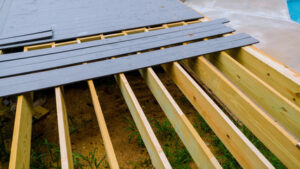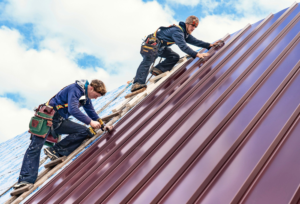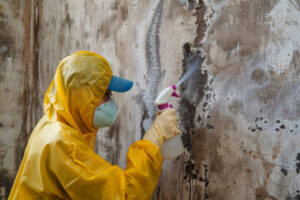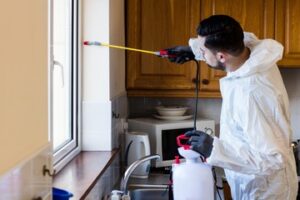Whether you’re doing cosmetic repairs or a serious structural repair, it’s important to hire professionals. However, negotiating terms and shopping for contractor discounts can help reduce the cost of deck repair.

Deck repair is a matter of safety, and simple timely repairs can prevent more costly problems in the future. Fortunately, most home owners can handle minor maintenance tasks like securing loose railings and staining their decks. Visit Website to learn more.
A deck that’s been damaged by storm or normal wear and tear needs repair as soon as possible. In the case of a wooden deck, this means addressing issues like loose boards and rotted wood. Depending on the extent of damage, you might need to replace some or all of the affected boards.
Loose boards are an immediate safety hazard for anyone walking on the deck, leading to fractures and sprains. They can also cause long-term structural damage as they shift and compress joists. In addition, loose boards allow moisture to infiltrate the structure, which can lead to mildew and wood rot.
One of the easiest ways to determine whether a board is rotting is to look for signs of water damage. Some discoloration and weathering is natural over time, but excessive deterioration indicates that the board needs to be replaced.
Another common sign of damage is a spongy feel to the board. This could indicate that the foam core has degraded and exposed a softer layer. This can be a serious problem and should be addressed as quickly as possible to prevent further degradation of the board.
Other signs of damage include cracks in the fiberglass shell and dings that expose the foam. These can be a result of damage from heavy surfers or other activity on the deck. In most cases, these dings can be repaired using fiberglass resin and epoxy to reconnect the damaged layers.
When it comes to particle board, damage can also occur when the boards are glued together. Epoxy is the best glue to use for this purpose as it bonds well with both sides of the board. This type of glue is also good for joining boards that have developed a small crack.
Before attempting to repair a crack, you’ll need to ensure that the board is completely dry. Moisture can cause the board to swell or warp, making it difficult to repair. Using a hairdryer and fans to speed up the drying process can help. Once the surface is dry, sand the affected area with medium-grit sandpaper to prepare it for repairs.
Water Damage
Over time, sun and rain take their toll on wooden decks. When wood becomes splintered, flaking, cracking or exhibiting other signs of damage, it’s time to look into deck repair options. Often, wood needs to be replaced before it starts breaking down further and posing safety risks for anyone walking on the surface.
Water damage from moisture infiltration is another common deck problem. It is possible to protect against this by applying a stain and/or sealant that offers waterproofing properties. But if these protective treatments fail, moisture can seep into the wood and attract a fungus that leads to wood rot. Fungus spores grow well in warm areas rich with moisture, and the rotting wood can eventually weaken or even disintegrate, creating a dangerously slick spot.
Moisture can also lead to a condition known as heaving, which causes portions of the deck to rise and fall like ice floating in a drink. This happens when footings, the concrete pads that support a deck’s posts, aren’t installed below the frost line, as required by building codes in colder regions. If the heaving is severe, it can pull up or even collapse your entire deck.
Termite infestations and insect damage can wreak havoc on a deck. If you notice piles of 1-2-inch insect wings or frass (termite droppings that resemble sawdust), it’s time to contact a local exterminator for help.
Loose railings can also be a serious safety hazard, especially for elderly or disabled persons. A loose railing may fall or get tangled up in a person’s clothing, leading to serious injury. A professional can determine the source of a loose railing and either fix or replace it, as needed.
Nails and screws corrode over time, which can make parts of a deck come loose or fall off completely. Regularly checking for corroded hardware is an easy, inexpensive part of a homeowner’s maintenance routine that can help prevent the need to complete costly deck repairs. Loose nails or screws should be replaced as soon as they’re spotted to avoid potential injury for anyone using the deck.
Loose Railings
Metal railings are a great safety feature on decks, but they can loosen over time. Loose metal railings can be dangerous, especially for children and elderly people. The best way to prevent loose porch railings is by performing regular maintenance. The first step is to carefully inspect the railings and posts to determine what caused them to become loose. Then, you can choose the right repair method.
One common cause of loose wooden porch railings is weather. Prolonged exposure to sunlight can fade, warp, and dry out wood, causing it to weaken over time. Humidity and moisture can also lead to wood rot and hardware rust. Wind can dislodge or damage the connections between railings, and hailstorms can dent or weaken the hardware.
Whether the railings are made of wood or metal, the steps for repairing them are similar. Examine the connections to make sure the screws, bolts, or nails are tightened properly. If the railings still wobble, you may need to reinforce them. Try using metal brackets, wood blocks, or stiffeners specifically designed for your type of porch railing.
You may also need to re-tighten the carriage bolts or screws that hold the railings in place. Wood expands and contracts with the seasons, and continuous freeze-thaw cycles can cause the hardware to loosen over time. Periodically tightening the bolts or screws can eliminate wobbling in wooden railings, but it is essential to follow a routine maintenance schedule to prevent problems from returning.
Plastic or composite railings are less likely to become loose than wood, but they can still become loose over time. To fix a loose plastic or composite railing, first locate the specific area that’s loose. Then, inspect each individual board to make sure it’s level and properly aligned. Finally, use a ratchet or drill to tighten any hardware that’s loose.
Pests
The slightest spill or crumb of food on your deck can serve as an invitation to pests. Keeping your deck clean on a daily basis can drastically cut down on how often you need to deal with pests. Sweeping the wood and wiping down surfaces with a cleaner made from a quart of bleach and a gallon of water will help keep your deck free of insects like ants, carpenter bees, hornets, and powderpost beetles.
Pests are especially attracted to old wooden decks that have become damaged by moisture and rot. These insects will slowly eat away at the materials that hold your deck together, eventually leaving you with a structure in need of major repairs or replacement. It’s important to look for these issues early on so that you can treat the pest problem and prevent it from spreading further.
While you can keep an eye out for obvious signs of pest damage, some red flags may be harder to spot. For example, a termite infestation could appear to be wood rot until you probe the affected area. Luckily, a professional will be able to tell the difference between the two with ease.
Rodents also cause significant damage to wood decks and are a serious risk for homeowners. Signs of rodent activity include greasy trails left behind by scurrying rats or mice, as well as holes in the deck and the surrounding areas. Termite damage can be more difficult to spot, but it’s essential to have any suspected infestation inspected by a professional.
If you have a problem with pests, try using repellent sprays to deter them. However, this can be dangerous for pets and children, so it’s best to hire a pest control specialist who can humanely remove the pests from your property.
Other ways to keep pests away from your deck include putting up netting to cover it, as well as making sure all plants are kept trimmed and away from the deck itself. You can also install flashing lights to deter possums and raccoons from living under your deck, as well as special “bug lights” that emit low-level light frequencies that don’t attract bugs.








